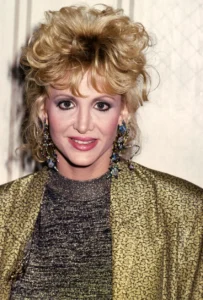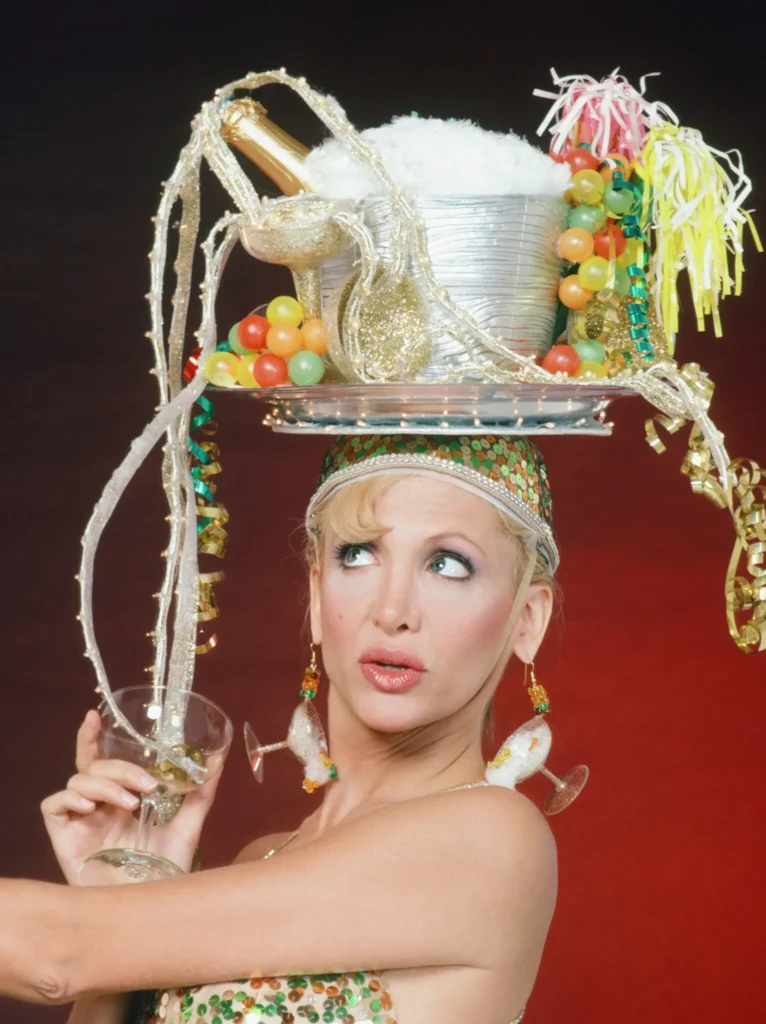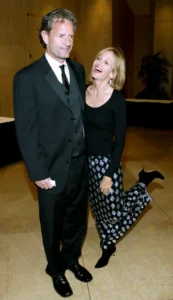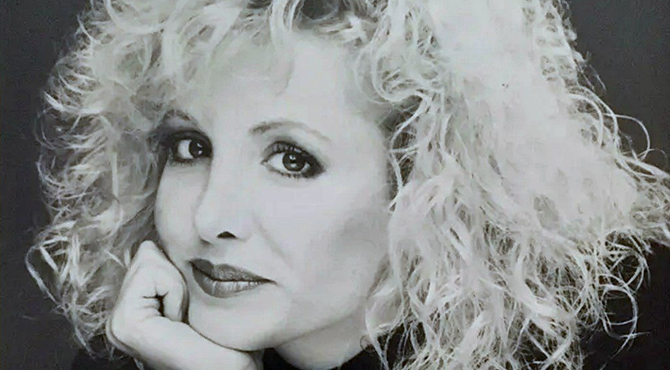Arleen Sorkin, an actress and comedian who created memorable characters in two decidedly different universes — the soap opera one of “Days of Our Lives” and the crime-fighting one of Batman, where her Harley Quinn became a fan favorite after she first gave her a voice in 1992 on “Batman: The Animated Series” — died on Aug. 24 in Los Angeles. She was 67.

Her husband, the producer and writer Christopher Lloyd, said the cause was pneumonia coupled with multiple sclerosis, which she had dealt with for many years.
Early in her career Ms. Sorkin was best known as part of a female comedy troupe called the High-Heeled Women, which formed in 1978 and performed all over the country, mixing jokes and comic songs. One number in their repertory was a rap called “For White Girls Who Have Considered Analysis When Electrolysis Is Enuf,” a riff on the Ntozake Shange play “For Colored Girls Who Have Considered Suicide When the Rainbow Is Enuf.”
By some accounts, Lilly Tartikoff, the wife of the NBC executive Brandon Tartikoff, saw Ms. Sorkin in a High-Heeled Women show and told her husband to look into signing her. In any case, in 1984 Ms. Sorkin made her debut on “Days of Our Lives,” the long-running NBC soap, as Calliope Jones (later Calliope Jones Bradford), an offbeat fashion designer who brought a rare burst of humor to the often overly earnest world of daytime drama.
In an oral history recorded in 2006 for the Television Academy, Ken Corday, one of the show’s producers, said that the character was inspired by the stage persona of the singer Cyndi Lauper. In her audition, Ms. Sorkin nailed the character’s kookiness.
“It was one of those things where we don’t need to read any more, we don’t need a screen test; she’s got the role,” Mr. Corday said.
Calliope quickly established herself as the quirkiest thing in Soap Land.
“The sacrosanct dramatic aura of daytime soaps has never tolerated a giggle, much less a full-out belly laugh, in plots dealing with drug abuse, child molestation, abortion, murder, wife-swapping and worse,” Vernon Scott, who covered Hollywood for United Press International, wrote in 1985. “Then along comes Calliope Jones, a ding-a-ling character in ‘Days of Our Lives,’ who actually pokes fun at soap operas themselves. This revolutionary development is akin to electing Eddie Murphy to the Politburo or appointing Johnny Carson to the Joint Chiefs of Staff.”
Viewers loved it; the fan mail began pouring in. The producers let Ms. Sorkin ad-lib some of her lines, adding a spontaneity to the usually glum proceedings. Calliope’s outlandish wardrobe augmented the comedy.
“What I lack in talent, I make up for in accessories,” Ms. Sorkin told Mr. Scott.
Ms. Sorkin appeared in more than 400 episodes of “Days of Our Lives,” most recently in 2010. Throughout her appearances, she sought to make viewers pay attention.
“I imagine women doing housework while they watch our show, things like ironing,” she said. “It’s my job to make them scorch something.”
The Calliope character helped bring about Harley Quinn, the Joker’s sidekick, who has an inexplicable romantic attachment to that archvillain even though he is abusive toward her.
Harley was introduced in a 1992 episode of “Batman: The Animated Series” called “Joker’s Favor.” Paul Dini, a writer for the show, told Entertainment Weekly in 2017 that he had been toying with creating a funny, snappy henchwoman for the Joker. Ms. Sorkin, an old friend from their days as students at Emerson College in Massachusetts, had appeared in a fantasy sequence on “Days of Our Lives” where Calliope was dressed as a sort of court jester. She had given Mr. Dini a videotape of her favorite “Days of Our Lives” moments, and the sequence was on it. Mr. Dini happened to watch the tape one day when he was sick and something clicked.

“I was like, Well, there she is,” Mr. Dini said. “She should run around with the Joker dressed like that.”
He and the animator Bruce Timm came up with Harley, a sidekick clad in red and black, and Ms. Sorkin provided the distinctive voice: “high-nasal, sing-song-y and filled with Brooklyn-ish inflections,” as Vulture put it in a 2015 article.
“Arleen Sorkin’s voice certainly gave a great deal of life and dazzle to the character,” Mr. Dini told Entertainment Weekly.
Harley wasn’t originally intended as a regular, but she became one, and then, later in the decade, made the transition to DC comic books, a rare case of a character going from TV to the page rather than the reverse. Ms. Sorkin provided her voice not only in “Batman: The Animated Series” but also in assorted video games and subsequent TV series, including “The New Batman Adventures” and “Justice League.” Among the other actresses who have taken up the role in animated or live-action productions is Margot Robbie (“Birds of Prey” and “The Suicide Squad”), who has most recently owned the box office as the title character in “Barbie.”
Mr. Lloyd, in a phone interview, was asked whether Ms. Sorkin would have described herself as a comedian, an actress or what. He said her choice might have been “clown.”
That, though, he said, would have been misleading, as she also had credits as a writer, including on the 1997 Jennifer Aniston movie “Picture Perfect,” and as a creator of the 1990s sitcom “Fired Up.” She was also involved in various humanitarian causes.
“These are not the typical achievements of a clown,” he said. “I think that’s how she would describe herself, but she went on to do quite a bit more than that.”

Arleen Frances Sorkin was born on Oct. 14, 1955, in Washington to Joyce and Irving Sorkin. Her mother held various jobs, including real estate agent. Her father was a dentist with a longtime dream of having one of his film ideas adapted into a movie. In an interview with The Los Angeles Times in 2007 on the occasion of his death, Ms. Sorkin recalled that when she was hired as an extra in the 1979 movie “And Justice for All,” when she left the family’s home in Washington headed for the assignment, he handed her a movie treatment he had written and asked her to give it to Al Pacino, the film’s star. (Dr. Sorkin’s dream was finally realized in 2004 when he received a producing credit on “Something the Lord Made,” an HBO film drawn from an idea he had long championed.)
Mr. Lloyd, whom Ms. Sorkin married in the mid-1990s, said she pursued an education degree at Emerson, anticipating a career in teaching, but was also involved in theater there. She played Lola in a production of “Damn Yankees,” and a cast mate urged her to hold off on teaching and instead give performing a try.
Lisa Passero, another Emerson alumna, was among the original members of High-Heeled Women and remembered her comic colleague in an interview with Emerson Today shortly after Ms. Sorkin’s death.
“She was just simply an unharnessed gem,” Ms. Passero said. “She had incredible wit and was oozing with personality.”
In addition to her husband, Ms. Sorkin is survived by her mother; two sons, Eli and Owen Lloyd; and two brothers, Arthur and Robert Sorkin.
